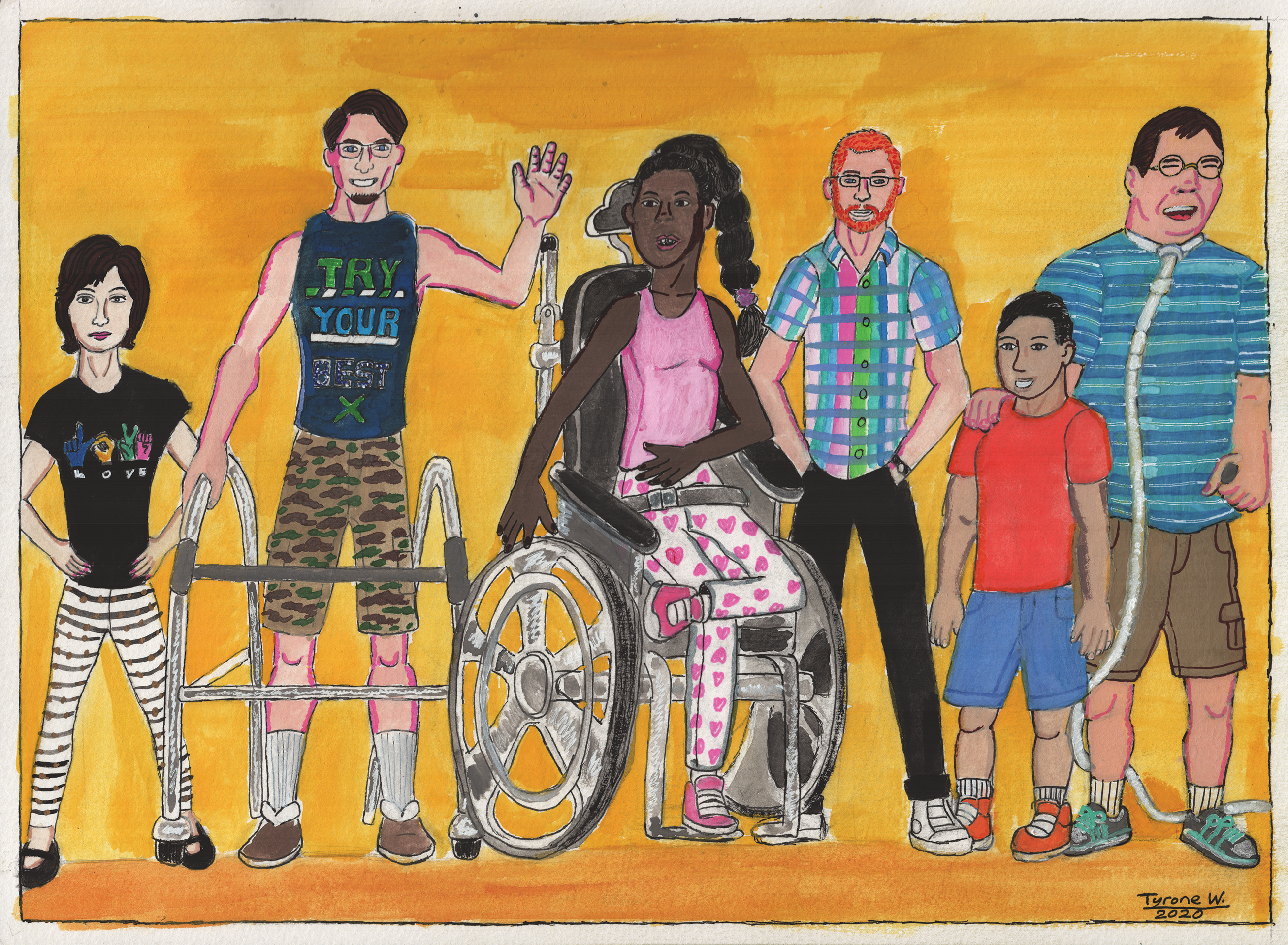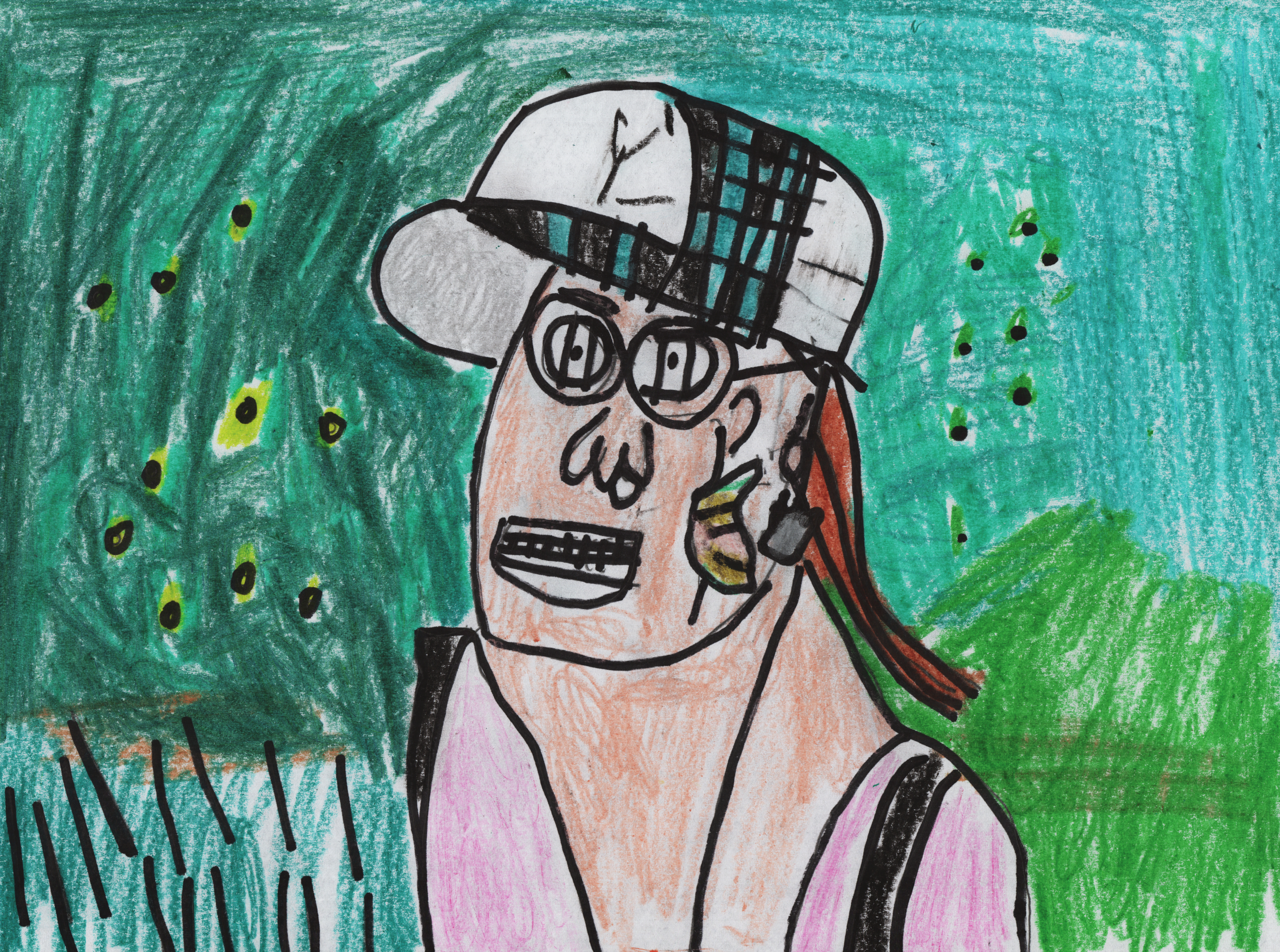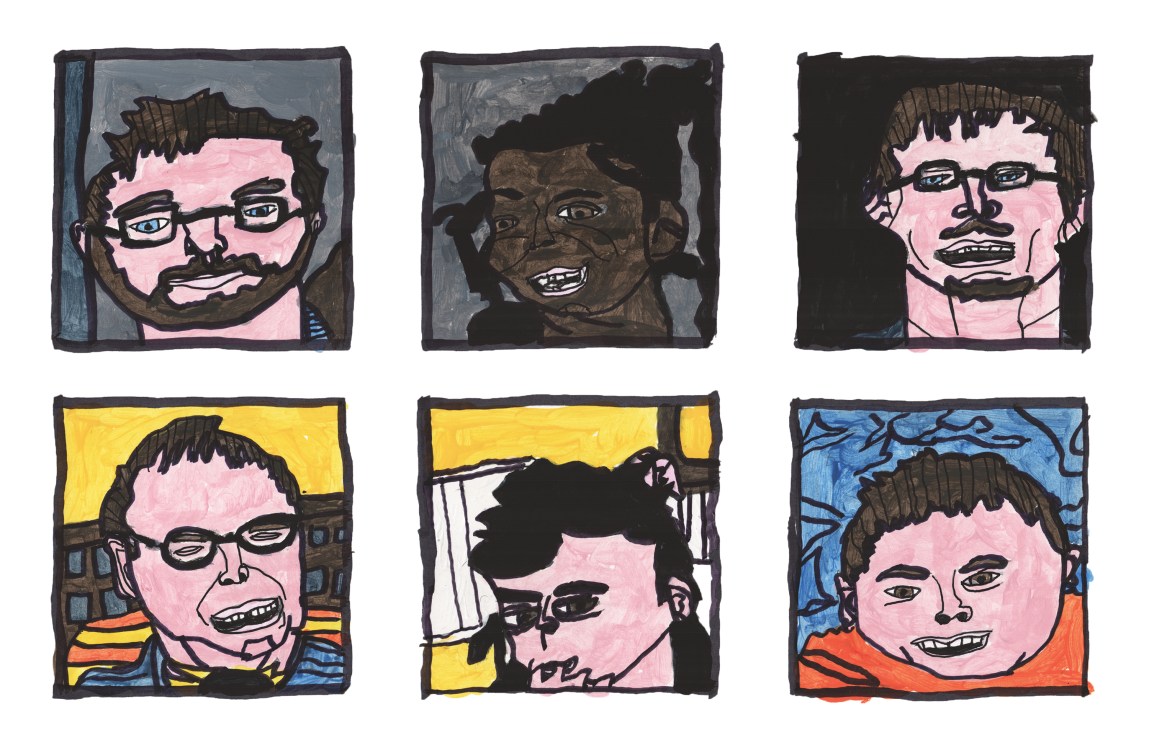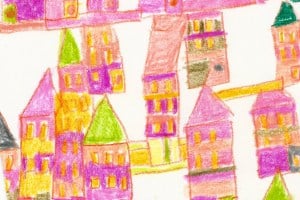Many people think Arizona does a good job helping people with developmental disabilities. But some people have problems getting help. It can be confusing. People wait a long time.
These are stories about people who had problems getting help in Arizona.
Developmental disabilities are sometimes called DD. There are many kinds of DD. Some of them are:
- Cerebral palsy
- Autism
- Intellectual disability
- Epilepsy
The place that helps people with DD in Arizona is called the Division of Developmental Disabilities. It is sometimes called DDD.
Kyra Wade is 11 years old. She likes:
- The color pink
- The movie “Monsters, Inc.”
- Watching people laugh
- Noodles and rice
Kyra’s parents don’t know what else Kyra likes or wants.
Listen to the Story
Play the audio
Kyra is autistic and deaf. She was born early. She was very small when she was born. She has trouble seeing, hearing, eating and sleeping. Her hand shakes so she does not do sign language. Her parents think she knows some signs.
Kyra’s parents know when she is angry. Kyra sometimes hurts herself. She hits her head and bites her hand. Her parents think she hurts herself because she is in pain.
Kyra got her period recently. Kyra’s mom didn’t know how to explain what a period was to Kyra.
Kyra and her family moved to Arizona in 2017. They hoped that DDD would help Kyra.
Kyra and her family were approved to get help from DDD.
In 2017, Kyra’s mom tried to get Kyra a tablet to help her talk to people.
The tablet is expensive. DDD said Kyra and her mom had to go to lots of doctors and therapists to prove Kyra needed it.
Kyra’s mom tried to get the device for Kyra 4 times. One time DDD told her they lost the paperwork. One time they told her she filled out old forms.
After 3 years, Kyra’s mom got her the device a different way. No one has helped Kyra learn how to use the device. Kyra’s mom is teaching herself how to use it.
Kyra spends a lot of time on the couch watching movies. Her parents help her use her Kindle to watch them.
Kyra’s mom and dad think she is sad for two reasons:
- Her body is changing because she is growing up.
- She can’t go to school because of COVID-19.
Kyra is now going to school some of the time. Kyra’s mom and dad have a hard time explaining all the changes to her. It may be easier to explain if they had gotten the device that helps Kyra talk from DDD.
Kyra’s mom says: “We would hopefully have been able to tell her that it’s not the end of the world. You don’t have to lay down like this.”

DDD wants people with DD to live with their families or in the community. DDD does not want people to live in institutions. An institution is a big building where many people with DD live together. It is like a hospital or a nursing home.
DDD has done a good job in the past. They paid for the help people with DD and their families needed. People did not have to wait to get help like in other states.
People got lots of different kinds of help. This help is sometimes called home and community-based services. Some kinds of services are:
- Nursing
- Speech therapy
- Respite
- Caregiving
DDD is not doing as well as it used to. Today, it can be confusing or hard to get services from DDD.
DDD has less money to help people now. It has changed leaders a lot. Each of these leaders made changes to DDD. Sometimes those changes made things better. But sometimes the changes made things worse.
There are many people with DD in Arizona. Most of them do not get home and community-based services. Very few people with DD get everything they need to live on their own. Some of those things are:
- Therapy
- Day programs
- Job training
- Housing
- Health care
Some people have to wait a long time to get help from DDD. Sometimes they do not get help at all.
One mom said she had to prove her daughter had Down syndrome before she turned 18. All people with Down syndrome are born with it. It is not possible to get Down syndrome after you turn 18.
Special doctors and lawyers help people learn how to get services from DDD. They make money helping people.
Lots of places have these same problems. But many people think Arizona does a very good job helping people with DD get what they need.
Paperwork from DDD shows there is a big difference between what people think about Arizona and what happens to people with DD and their families.
Workers at DDD said they care about helping people figure out how to get what they need. Some people there have jobs telling families what to do to get services.

Many people who want services from DDD cannot get it. The paperwork from September 2016 to March 2020 says 4 out of every 10 people who wanted help from DDD did not get it. That is almost half the people who wanted help.
There are many reasons people didn’t get services from DDD. Those reasons are:
- They didn’t have the paperwork they needed.
- They didn’t finish filling in their paperwork.
- DDD said they didn’t need the help they wanted.
- They didn’t want help from DDD anymore.
Some people only get a little help from DDD. They get advice from workers at DDD. They do not get therapy or caregivers. That is because DDD has less money than it used to. There is not enough money to give everyone more help.
Get Involved
Read More
Some people need health care or technology. They need to get approved for DDD and another program. That program is Arizona’s long-term Medicaid program. It is called the Arizona Health Care Cost Containment System. Sometimes it is called AHCCCS.
Getting approved for help doesn’t mean you will get everything you need.
One doctor said only a few people get everything they need.

75 people with DD and their families told their stories for this article. They talked about the problems they have had getting help. They talk about being tired, worried and scared.
These are some of the stories people told:
- A boy in Casa Grande needed special help eating. His parents could not find him a nurse. They had to learn a scary job to help him eat.
- An adult man in Tucson needs care. His sister-in-law can’t find the help he needs. She takes care of him. They can’t leave the house very much.
- A woman in Buckeye lives in a group home. Her dad needs to call the workers there many times a day to make sure she gets what she needs.
- A deaf girl in Mesa uses sign language. Her mom and dad have to translate what she says when there isn’t someone else who speaks sign language.
- A girl in Tucson uses a device to help her talk to other people. It is old. It started smoking when her mom plugged it in.
Workers at DDD know some people have problems. They said they are trying to get better. They said they are working to make sure people get what they need quickly.
But DDD thinks it is doing a good job for most people. Workers at DDD said there is more money to give people with DD what they need than there was before.
DDD said most people have not told them they have problems getting services. DDD did a survey of some people who get their help. Workers at DDD chose who did the survey. In the survey, 99% of people said they were happy with the help they got from DDD.
DDD also said the workers at DDD work hard to get people with DD the help they need.
DDD did not say anything about the people who shared their stories for this article.

A Model Program
Kyra probably wouldn’t live with her parents if she was born in the past. She might live in an institution. An institution is a big building where many people with DD live together.
There have been institutions since the 1800s. Too many people lived in them. The people who lived there got hurt or abused.
Society has never treated people with DD well. In ancient Greece, babies with DD were killed. They were thrown in the river.
People with DD still get hurt in society. That includes Arizona.
Ron Barber used to be in charge of services for people with DD in Arizona. He said bad things happened to people with DD in institutions. People were punished a lot. If you chewed on something you weren’t supposed to, you’d have to put a bad-tasting cloth in your mouth. If you peed on the floor, you’d have to clean it up yourself.
Ron and other people in Arizona helped make things better for people with DD. They thought people with DD should live in the community.
This plan helped people do the things they wanted and saved money. Arizona and the US government paid to help people with DD live with their families or on their own. Arizona was one of the first states to do this.
In 1999, the US Supreme Court decided that all Americans with DD should be able to get what they need in their community. This decision is called Olmstead v. L.C.
People with DD are like all other people. Everyone wants and needs different things. The government says each person should get the help that works best for them.

Len Kirschner is another person who used to be in charge of helping people with DD in Arizona. He led AHCCCS.
Len said it wasn’t easy getting the government to agree that people with DD should live in the community.
He said, “They did not like home and community-based services because they said that’s what people want and if you give them that you’ll get more people and that will cost us more money.”
Len told them it was okay that more people would want help. Getting help in the community costs less money than in the institution.
People all over the USA were impressed with the way Arizona helped people with DD.
Len said: “I was having people come here from all over the country to look at our system. We’d get calls from every state.”
A 2017 report said that Arizona has more people with DD living at home than any other state. This report is called the State of the States.
Less than 200 people with DD still live in institutions in Arizona.
Another report said that Arizona is the best place for people with DD in the country. This report is by a group called United Cerebral Palsy. Arizona was ranked the best for more than 10 years.

The Breakdown
People don’t think Arizona is as good as they used to. Bad things happened to make them change their minds.
One bad thing happened in 2018. A 29-year-old woman lived in an institution in Phoenix. It was called Hacienda. She had lived there since she was 3 years old. She needed help caring for herself. She didn’t walk or talk.
She had a baby on New Year’s Eve. She was pregnant because a nurse forced her to have sex. This is called sexual assault. The nurse was arrested. This was not the first time she had been pregnant.
This bad thing made the government in Arizona think about people with DD. It showed that living in the community is better than being locked in an institution.
The government in Arizona wanted to pass laws to stop people with DD from getting hurt. But the government couldn’t meet because of COVID-19.
Some people think the woman getting hurt at Hacienda is part of a bigger problem. They think it is because of DDD.
DDD has less money to help people with DD now. The Arizona government took money away from DDD in 2009. There is also less money to pay caregivers.
A caregiver is a helper for a person with DD.
DDD would need a lot more money to pay caregivers the same amount they make other places.
Some people say that caregivers quit their jobs because they don’t make enough money.
Nicole Martinez worked at a day program in Tucson. She helped people with DD. She had to leave her job. She didn’t want to leave. But she didn’t make a lot of money. She only made $12 an hour.
Nicole works at a school now. She makes more money.
She misses her job at the day program. She misses the people with DD she worked with.
Nicole said: “Their lives are literally in your hands. I wanted to stay there. I cried so much when I had to leave. It hurts your heart.”
Many people like Nicole quit their jobs. Many people who were bosses at DDD have also left.

A support coordinator is a person who works at DDD. It is their job to get a person with DD what they need.
The support coordinators at DDD have too much work. Some of them quit their jobs.
This means people sometimes wait a long time to get help.
DDD said more than half of people who just started getting help from DDD did not get what they needed in the first month. DDD said this in February 2020.
Some people said they waited for years to get help.
The leaders of DDD change often. DDD has had 6 new people in charge in the last 5 years.
The place that is in charge of DDD is called the Department of Economic Security. This place has also had many new leaders. They have had 5 new leaders in the last 5 years.
Nancy Barto is a state senator for Arizona. She said DDD is having problems because it has so many new leaders.
She said, “I think we lost a lot of time by having a lot of turnover and not really focusing on this agency and how accountable it has not been.”

AHCCCS gives health care to many people in Arizona. They work with DDD.
They have found lots of problems with DDD. They said:
- DDD makes some people wait a long time to get help.
- DDD did not do enough to make sure people with DD were safe at home and in the community. There were many reports that someone might not be safe but DDD did not check.
- DDD needed to stop making people wait for devices that help them talk. This is the kind of device that Kyra was waiting for.
DDD said:
- They are working so people don’t wait as long.
- They have checked on all the reports about people with DD.
- They are now getting some people devices to help them talk.
Workers from DDD said, “No member or family should have to experience a long wait time to find caregivers, therapists and nurses.”
But getting help is still hard. A report from last year said many people are not happy with DDD. They said:
- There are not enough caregivers.
- Too many people at DDD leave their jobs.
- Workers at DDD did not know enough.
The report said people “reported wanting more information, and transparency, from the Division of Developmental Disabilities.”
This means that people think DDD is not telling them what they need to know.

The Eligibility Game
Janine Cox and her mom Carol moved to Arizona in 2019. They live in Gilbert.
Janine is 41 years old. She has Down syndrome. She has a heart problem too.
Janine’s mom thought getting the help Janine needs would be easy.
Janine and her mom used to live in Washington. It was easy getting Janine what she needed there. Janine had job training in Washington. She worked jobs at Lowes and Target. She was part of the Special Olympics.
Janine’s mom wanted to help Janine find a day program in Arizona. She wanted Janine to work on her social skills.
Janine’s mom went to DDD to get Janine services. She brought paperwork about when Janine was in school. DDD told Janine’s mom she needed new paperwork. The paperwork should say that Janine needs help from DDD. Janine did not get approved to get help from DDD.
A special doctor tested Janine. The doctor wrote a report that said she should get help from DDD. Janine’s mom took the report to DDD.
A different worker at DDD told Janine’s mom the report was not right. It was too new. They needed paperwork from before Janine turned 18.
This is the opposite of what the first worker at DDD told her.
Janine’s mom gave the worker at DDD the same paperwork she gave DDD the first time. Janine was approved to get help from DDD.

It is confusing to get help from DDD for a lot of people. There are people who you can pay to help you figure out how to get help from DDD. They cost a lot of money.
Not everyone can get help from DDD. To get help from DDD, a person has to have DD. There are many kinds of DD. But the only kinds of DD that count for DDD are:
- Epilepsy
- Cerebral palsy
- Autism
- Intellectual disability
The person must have DD since before they turned 18. They also must need help with some things.
Read More
Read More
A worker at DDD decides who gets services. This person decides how much help a person with DD can get. Some people get lots of help. Some people only get a little help.
Sometimes people get more help as they get older. Sometimes they get less.
It is very confusing for many people and their families. Families hire doctors and lawyers to help them figure out how to get approved.
Bridget Swartz is a lawyer who helps people get services from DDD. She said some families hire a doctor to write a report for DDD. This costs a lot of money.
The workers at DDD ask questions about what the person with DD can do. Bridget helps families know how to answer those questions. She tells them to use lots of detail.
Sydney Rice is a doctor. She works at University of Arizona in Tucson. She said some people don’t get help from DDD because they don’t speak English. She works with people in Douglas. Many people there speak Spanish.
Sydney said sometimes she is surprised by who gets help from DDD.
Some people go to court to get services from DDD. Four families in Arizona went to court. All four families won their case. They got the help they needed from DDD.
One of the people who won a court case is Jaden Ruiz. Jaden lives with his mom and dad in Avondale.

Jaden has brown hair. He has autism.
Jaden’s mom said Jaden was a healthy baby. But he stopped talking when he was 1 ½ years old. He liked to chase cars.
Jaden’s mom said he didn’t know that it wasn’t safe. She said it was hard to keep him safe.
Jaden started getting help from DDD when he was 3 ½ years old.
DDD stopped giving him help when he was 6.
Jaden and his family went to court. The court said that DDD was not allowed to stop giving Jaden help. DDD must give Jaden what he needs.
Jaden’s dad said, “We felt blessed that finally justice was served to our favor because we knew that it was unjustified to begin with.”

The Basic Program
Cassie Camacho is 29 years old. She is her own guardian. She lives at home with her parents. Cassie takes college classes. She is trying to get her associate degree.
Cassie said she has an intellectual disability. Cassie said she is “high functioning.” She used to go to special education classes.
Cassie posts pictures on her Facebook page. She posts pictures of herself giving thumbs up. Some of the pictures are at the Special Olympics.

Cassie only gets a little help from DDD. This is the basic program. About 5 thousand people in Arizona get the basic program.
In the past, people with the basic program still got services from DDD. Arizona paid for it. DDD does not have money to pay for it anymore.
Cassie has tried to get more help. She has tried to get Medicaid long term services. Her dad said she has applied 3 or 4 times. She was not approved.
There are many things Cassie wants to do. She wants to:
- Learn how to manage money
- Learn how to cook
- Move to her own place with other people with intellectual disabilities
Cassie’s dad just retired. Cassie said: “I think maybe he might want to have little breaks sometimes, too. I know my parents aren’t going to be around forever.”
Other people with DDD’s basic program have problems too. Some parents said they told workers from DDD to stop coming. The parents thought the workers couldn’t do anything.

Eric Nunn is 29. He has red hair. He has a shy smile and big muscles. He works out. He has a job at a print shop. He acts in a theatre company.
Eric has Down syndrome. He said if he had three wishes, he would wish for friends.
Eric spends most of his time at home. Sometimes he stays with his mom in Scottsdale. His mom’s name is Terri. She is 61 years old. She works in IT.
Sometimes he stays with his dad in Mesa. His dad is 71 years old. He works as a physician assistant.
Eric has a little money. He has his part time job. He has money from Social Security. His parents help him make ends meet.
Eric’s mom says she wishes Eric could go to a day program. He could make friends there. But day programs cost too much money. Eric and his parents would have to pay for it themselves. DDD will not help pay.

Eric’s mom wants Eric to live on his own with roommates. She thinks he could do it if he has help. She is worried about Eric. She and Eric’s dad can’t take care of him forever.
It costs too much money for Eric to live somewhere else. They can’t pay for caregivers.
Eric’s mom said, “Wouldn’t it be lovely if there was actually some place for him to live?”
Eric was approved to get the basic program from DDD. He does not get long term care. Eric’s mom has tried to get Eric more help three times.
A worker at DDD told Eric’s mom he doesn’t need help. His parents help him.
Eric’s mom said, “They said, ‘When you die, he’ll qualify.’”

No Service
Some people with DD get more help through Medicaid. But even with Medicaid people don’t always get what they need.
Mike Lundergan is 33 years old. He is thin. He has thick glasses and light hair. He lives with his mom and dad in Tucson.
Mike was born very early. He has cerebral palsy. He has problems seeing and hearing too. He wears hearing aids. He takes medication so he doesn’t have seizures.
Mike uses a ventilator at night. This is a machine that helps him breathe. He uses machines during the day too.
Mike loves music. He goes to concerts. In his interview, Mike played music with his drumsticks.
Mike talks using his voice and sign language. Mike’s mom sometimes helps people know what Mike is saying.
Mike was asked what he wants people to know about him. He said: “I’m happy! I love pizza!”

Mike needs help all the time. There are not enough nurses to help Mike. Mike’s mom gives him a lot of help. She sometimes does not get a break because there is no one else to help.
Mike had nurses hurt him in the past. One nurse did not give him his medication. She messed up the machine that helps him breathe.
Mike’s mom is worried about what will happen when she and Mike’s dad die. She said Mike will probably die too. No one will be there to take care of him.
Other families have problems getting the help they need too.
Maycee Scott is 19 years old. She has cerebral palsy, epilepsy and an intellectual disability. Sometimes she uses a wheelchair. When she walks she needs someone to walk with her.

Maycee’s mom is named Marianne. Marianne runs a program called Arizona Partners in Leadership. She helps parents stand up for their kids with DD.
Maycee’s mom has a lot of experience. But she still has problems getting what Maycee needs.
She said, “The level that a parent is expected to understand and know is crazy.”
Maycee had to wait a long time to get a speech therapist. She sometimes can’t find caregivers. Maycee’s mom thinks it is because people don’t get paid a lot of money to do that job.
Maycee had to wait more than two years to get a device to help her talk to other people. This is the same kind of device Kyra had to wait for.
Maycee and her mom went to talk to a counselor about getting a job when Maycee turned 16.
The counselor works for vocational rehabilitation. Maycee’s mom said, “She looked at me and she said, ‘Well, I don’t think she will be employable.’”
Maycee’s mom is worried about getting Maycee what she needs.
Maycee’s mom said: “You’re supposed to have all these people in there to help and guide you along the way, and in every system I’ve had to fight and claw and say I know this is my right. I have cried so much in the last year. I’m panic stricken. What am I going to do with her for the rest of her life?”














